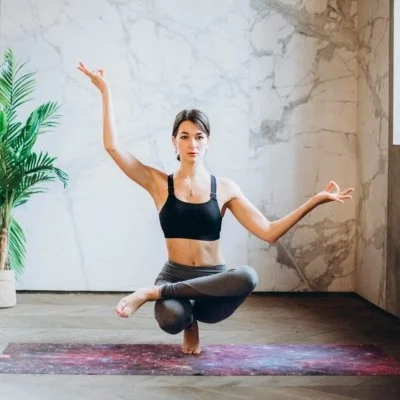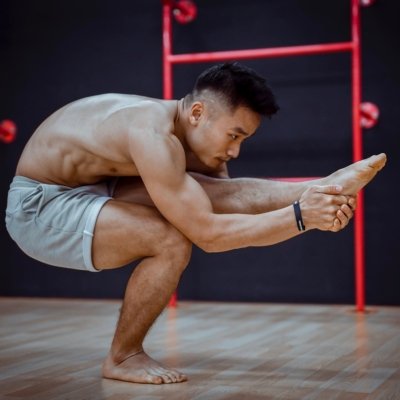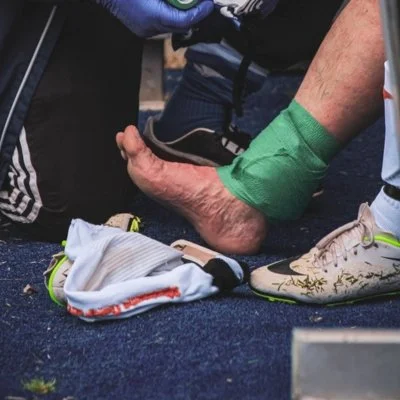The Benefits of Working Out Barefoot
There are a lot of great things about Victory, but one of the things our clients seem to love most is the very relaxed vibes that hit you when you walk through the door.
We want everyone who enters our space to feel comfortable – so comfortable, in fact, that we ask you to ditch your shoes at the door.
This isn’t a fashion statement, political stance, or because our front desk staff is anal about cleanliness. This policy is actually for your benefit!
When your feet aren’t hiding inside a pair of shoes, a physical therapist can get a better idea of how each foot moves, if any asymmetries exist, and whether or not impairments stemming from the foot are impacting your movement patterns overall.
The advantages don’t end there. There are actually tons of reasons to slide your shoes off for an hour and kick it barefoot!
Here are five reasons why exercising barefoot is beneficial.
1. Shoes Are Like Jail Cells For Your Feet
Okay, that’s a little harsh. But think about it this way: There are 29 muscles associated with the human foot and ankle, and 19 of them are intrinsic – meaning they operate only within the foot. Their jobs are to stabilize the arch, control your big toe, provide dynamic stability, and regulate your foot’s ability to move as it absorbs forces from the ground and transmits them throughout the rest of your body.
It’s a huge undertaking, and wearing shoes limits your ability to activate these critical muscles. If your feet are stiff, immobile, or unable to adequately absorb shock, it could potentially cause stress and more significant problems up the kinetic chain and into other joints like your ankles, knees, and hips in the future.
Without shoes to do the work for you, your intrinsic foot muscles are forced to work harder with every step – leading to a more adaptable and stronger foot overall.
2. Being Barefoot Forces You to Improve Your Balance
Your foot is made up of three parts: Your hindfoot, midfoot, and forefoot. But most people don’t know this – especially because when it’s inside a sneaker, your foot feels like one big unit rather than multiple moving parts. Exercising barefoot enables your foot to move dynamically and adapt to various surfaces for better balance.
Allowing your feet to touch the ground also increases proprioception, or your own awareness of your body in space. By improving the feedback between your brain and the nerves in your feet, you can actually enhance your overall balance and coordination, leading to greater stability gains overall.
3. Ditching Your Shoes Can Increase Ankle Stability and Agility
When your feet aren’t adaptable, your ankles have to work overtime to keep you upright — especially during activities that require quick, spontaneous movements or changes in direction. A disconnect between the foot and ankle can put you at increased risk for ankle sprains. Research shows that athletes performing their sport’s activities barefoot had better ankle stability and speed during hopping tests compared to athletes who wore shoes.
Another study found that an 8-week barefoot training program increased ankle agility and ankle stability in netball players. Specifically, individuals in the barefoot group improved their reaction time, foot speed, static balance and change of direction as early as two weeks into the intervention, with further improvements continuing through the rest of the training cycle.
4. Exercising Without Shoes Actually Makes Your Stronger
Activating your foot’s intrinsic muscles won’t just increase your foot strength – you'll also get full body benefits. A 2018 study published in the Journal of Strength and Conditioning Research found that, compared to individuals wearing shoes, barefoot individuals had better rates of force development during deadlifts. Another 2019 study from the University of Plymouth found that individuals who trained barefoot had higher rates of force and higher peak force during isometric hex bar deadlifts compared to individuals who wore regular training shoes. While more research is necessary to fully investigate the effects of weightlifting barefoot, the ability to generate higher rates of force will inevitably lead to bigger strength gains.
5. Increasing Your Time Barefoot Could Reduce Injury Risk
Exercising your way to a stronger, more adaptable foot can help reduce your injury risk, and the increased proprioception benefits can help improve your motor control and coordination. While there’s not a ton of research available, one study analyzing foot structure and function in habitually barefoot children in Kenya found that compared to children who regularly wore shoes, habitually barefoot children had greater foot strength compared to those who wore shoes. The study also found that lower-limb injury prevalence was just 8% in habitually barefoot children compared to an alarming 61% in children who regularly wore shoes – despite the fact that habitually barefoot children engaged in more physical activity.
****
While you may be tempted to ditch your shoes for good, it’s important to remember that walking and exercising barefoot should only be done in a controlled environment (like Victory’s gym!) and needs to be introduced gradually.
Start with shorter (20-30 minute) increments, and as your feet get used to exercising barefoot, you can increase the length and intensity of your workouts. A good place to start is by simply walking barefoot around your house for 5 minutes a day!
This blog post was written by DPT, Erin Kelly. Give her a follow on Instagram! @erinkellylikesthis
Be sure to check out her blog here.






